The myriad of stars scattered across the vast expanse of the night sky may appear countless, but in reality, the human eye can only perceive roughly 6000 distant luminaries. Navigating through this celestial tapestry is no easy feat. Throughout history, astronomers from various cultures have created constellations based on their respective legends, beliefs, and worldviews. These constellations, or clusters of stars, have the potential to transform into anything imaginable. Take, for instance, the legends surrounding the constellation known as Ursa Major, also known as the Big Dipper. Interestingly, this famous asterism was not always associated with a bear or a dipper in ancient lore.
The Big Dipper is arguably one of the most easily identifiable constellations on the planet. However, different cultures have different myths and stories associated with the Big Dipper constellation. In many cases, the dipper, which is easily recognizable in the night sky, did not evoke any imagery of wild animals. Therefore, how did people from diverse cultures perceive and interpret this particular constellation?
Egypt
Egypt is a country located in North Africa. It is known for its rich history, ancient civilizations, and iconic landmarks such as the Pyramids of Giza and the Nile River. The country has a diverse culture, with influences from Arab, African, and Mediterranean traditions. Egypt is also famous for its delicious cuisine, with dishes like falafel, koshari, and baklava. The country is a popular tourist destination, attracting millions of visitors each year who come to explore its historical sites, relax on its beautiful beaches, and experience its vibrant cities.
The ancient Egyptians were pioneers in the field of astronomy, erecting round stone “observatories” as early as the fifth millennium B.C. These observatories served as the foundation for the constellation system that was later adopted by the Middle Ages inhabitants, the Greeks, the Arabs, and eventually modern science. During this ancient time, the Earth’s axis precessed in such a way that the northern sky was not centered on Polaris, but rather on Alpha of the Dragon (Tuban). The Egyptians considered this region, along with its neighboring stars, as the “fixed sky,” the divine abode of the gods. The Egyptian priests were unaware of the myths surrounding the Big Dipper and instead interpreted the star formation as the leg of Seth, the god of war and death, who transformed into a bull and fatally struck Osiris with his hoof. In retaliation for his father’s murder, Horus, depicted with a falcon head, severed Seth’s limb.
China
China is a country located in East Asia. It is known for its rich history, diverse culture, and impressive technological advancements. The country has a population of over 1.4 billion people, making it the most populous country in the world. China is also the second-largest country by land area, covering approximately 9.6 million square kilometers. With its booming economy and global influence, China plays a significant role in the international community. From its iconic landmarks such as the Great Wall of China and the Forbidden City to its delicious cuisine and traditional festivals, China offers a unique and unforgettable experience for visitors. Whether you are exploring the bustling streets of Beijing, admiring the stunning landscapes of Guilin, or immersing yourself in the vibrant culture of Shanghai, China has something for everyone.
India
Ancient India’s progress in observational astronomy was not as remarkable as its progress in mathematics. However, it was greatly influenced by both Greece and China. For instance, the concept of the 27-28 “stands” (nakshatras) through which the Moon passes in about a month bears a striking resemblance to the Chinese lunar “houses”. The Hindus also held Polaris in high regard, considering it as the dwelling place of Vishnu himself, according to the experts of the Vedas. The Bucket asterism, situated beneath Polaris, was believed to be the Saptarisha – seven sages who were born from the mind of Brahma and were the ancestors of the world in our current epoch (Kali-yuga) and all the beings in it. In this legend, the Indians did not include the Great Bear, but using the same logic, any constellation can be depicted as a sage.
Greece
Greece, officially known as the Hellenic Republic, is a country located in southeastern Europe. It is known for its rich history, beautiful landscapes, and vibrant culture. Greece is famous for being the birthplace of democracy and the cradle of Western civilization. It is home to many ancient ruins, such as the Acropolis in Athens and the Temple of Apollo in Delphi. Greece is also known for its stunning islands, such as Santorini and Mykonos, which attract millions of tourists every year. The country has a Mediterranean climate, with hot summers and mild winters, making it an ideal destination for beach lovers. Greek cuisine is also famous worldwide, with dishes like moussaka, souvlaki, and baklava being favorites among food enthusiasts. Overall, Greece offers a unique blend of history, culture, and natural beauty, making it a must-visit destination for travelers.
The Big Dipper is one of the 48 constellations mentioned in Ptolemy’s star catalog around 140 BC, although it is first referenced much earlier, dating back to the time of Homer. Greek myths surrounding its origins vary, but they all agree that the bear represents the lovely Callisto, the companion of the goddess-hunter Artemis. According to one version, the amorous Zeus, using his usual trickery of reincarnation, seduced Callisto, which angered his wife Hera and Artemis herself. To save his lover, Zeus transformed her into a bear, and she roamed the mountain forests for many years until her own son, fathered by Zeus, encountered her while hunting. The supreme god had to intervene once more, ensuring their safety and bringing them both to the heavens. The tale behind the constellation of the Big Dipper is truly captivating, although we still struggle to visualize this creature in the shape of a bucket.
America
The Native Americans had a unique understanding of wild animals, as evidenced by the Iroquois legend of the origin of the asterism. In this legend, the “celestial bear” depicted in the Big Dipper does not have a tail. Instead, the three stars forming the handle of the Ladle represent three hunters who are in pursuit of the beast. Aliot is shown drawing a bow with an arrow embedded in it, Mitzar carries a cauldron for cooking meat (Alkor), and Benetnash carries an armful of kindling to light the hearth. As the fall season arrives and the Bucket turns and sinks low on the horizon, blood from the wounded bear drips down, causing the trees to become stained with mottled colors. This myth of the Big Dipper may be violent, but the depiction of three hunters instead of a tail truly gives the picture a wild and untamed appearance.
Mobile Authentication Service

“The Chinese chronicles dating back to the 3rd millennium B.C. provide detailed accounts of systematic star observations within the Great Bucket constellation, which exhibited a change in the position of its handle during the evening. At that time, the pole was in close proximity to the alpha star of the Dragon constellation, causing the Bucket to appear to rotate around it, aligning itself differently depending on the season. Upon closer examination of this rotation, one can easily identify its likely connection to the swastika symbol, which represents eternity and the perpetual flow of time. The traditional design of the compass, a significant Chinese invention, further supports this theory as it was shaped like a ladle with a handle pointing towards the south. It is my hope that by comprehending the true meaning behind this ancient symbol, we can rectify its tarnished reputation associated with fascism.”
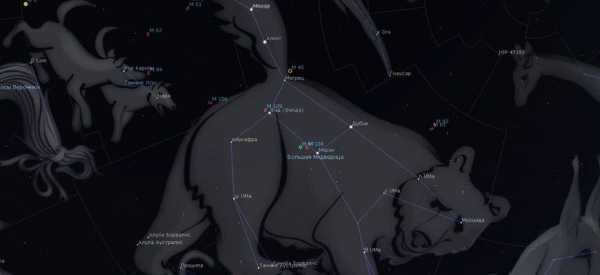
Constellations
One of the most adored and renowned groups of stars in the entire celestial sphere can be referred to as the Constellation Big Dipper. It is the initial one shown to children, the first to be recognized in the sky and studied, attempting to unravel all its enigmas. Its name translates literally from Latin as “big bear”, and the most brilliant stars constitute a recognizable asterism “bucket”, which is clearly visible in the nocturnal sky.
This group of stars was familiar to all individuals from diverse cultures, thus the Big Dipper constellation is linked with a vast array of legends, myths, and tales. Everyone endeavored to speculate precisely how it materialized in the sky, and why it is connected to a formidable woodland predator.
The constellation known as the Big Dipper was first documented in the celestial catalog during the second century by none other than Ptolemy himself, who had a keen interest in studying this particular group of stars resembling a “celestial ladle”. Researchers have determined that the Big Dipper is the largest constellation in the entire Northern Hemisphere of the sky, and it also holds the distinction of being the third largest in terms of angular area among all constellations.
Another notable aspect of the Big Dipper is its role as the progenitor of a group of constellations bearing the same name. When observing the night sky, one can easily observe that it shares borders with a total of eight fellow constellations.
The appearance of the Big Bear constellation is well-known – it takes the form of a large ladle that is easily visible in the sky, even without the aid of a telescope. In the Russian Federation, this constellation is considered to be non-setting. Understanding the Big Dipper in its entirety requires knowledge of its historical background and its makeup.
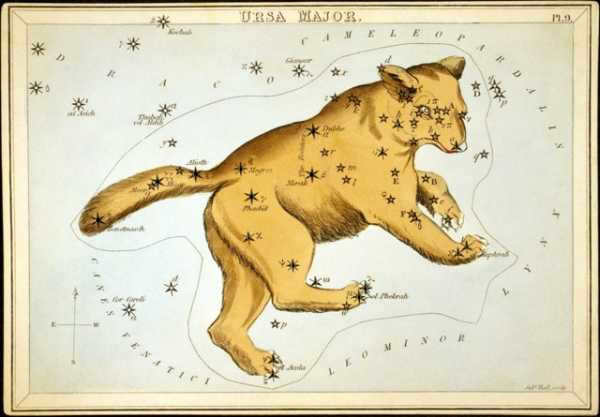
Sydney Hall’s drawing in Urania’s Mirror depicts the Big Dipper constellation.
The story behind the Big Dipper constellation
Instead of its official name, it is often referred to as the “Big Dipper” or “Plow” due to its world-renowned shape. This constellation has a long history and various explanations behind its name. It is one of the oldest and most well-known constellations in the night sky. Even before the famous astronomer Ptolemy discovered it, the constellation was mentioned in ancient texts such as Homer’s works and even in the Bible.
As previously stated, the Big Dipper is a constellation that is widely recognized, and as a result, it has been the subject of various stories in different cultures. Each culture has its own unique tale to tell. For instance, in Greek mythology, the constellation is associated with Callisto, who is known as the “celestial predator”. Callisto was a beautiful and enchanting nymph who caught the attention of Zeus, the god of thunder. Despite her lack of memory, Zeus fell in love with her. However, his jealous wife Hera discovered their affair and sought revenge by transforming Callisto into a massive bear.
Years later, while Callisto remained trapped in her bear state, she had an encounter with Hera and Arkas, Zeus’ son. Callisto approached them, but her true identity went unnoticed. In order to avert any potential tragedy, Zeus intervened and devised a clever solution – he immortalized them in the heavens, where they became the constellations of the Big Dipper and the Volopassus, forever admired by all.
There is a popular misconception that connects the constellation Ursa Major’s Dipper to another Greek beauty – Adrasteia. Adrasteia was a nymph who was well-known for taking care of the young Zeus. Ida was another woman who frequently appeared in Greek myths and was associated with the Ursa Minor constellation. However, the interpretation of the Ursa Minor varied across different cultures. Some saw it as a boat, while others saw it as a sickle, a shark, a camel, or other diverse images.
Using the constellation Big Dipper for navigation is a simple task, as it provides a guide to Polaris, which is part of the Lesser Bucket. By following an imaginary line from Merak to Dubhe and extending the arc in your mind, you can easily locate the North Star, which has always been used by sailors for orientation. Following the same imaginary line can also lead you to Volopas and Virgo.
The Arabs have come up with an equally interesting interpretation. In Arab culture, it is believed that the cluster of stars represents a “coffin with mourners”. The last star in the tail of the Dipper is considered the leader, while the other stars symbolize the mourners. Additionally, the pairs of stars that represent the bear’s feet have been given various names.
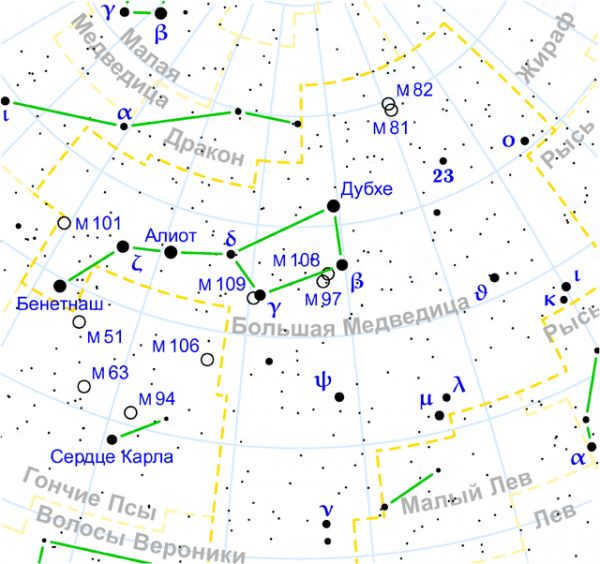
The Big Dipper is a well-known constellation in the night sky.
The prominent stars in the Big Dipper constellation
Many stargazers attempt to count the number of stars in the Big Dipper constellation. Astronomers have identified seven major stars that form the “dipper,” and each of them possesses its own unique beauty. These stars vary in shape, composition, and age, but some of them are clustered together.
Aliot, the most brilliant and exquisite star in the entire constellation, is ranked thirty-first in terms of brightness among all the stars that have been documented by researchers. Its name, which means “tail of cattle,” was given due to its location in the bear’s tail. This prominent star is a part of a cluster of stars in the Big Dipper that share a similar velocity and origin.
This remarkable discovery was made by the renowned English astronomer Proctor during the latter half of the 19th century while he was studying the constellation. Through extensive observation and research, Proctor deduced that all but two of the Medusa stars share a common proper motion, moving towards a point within the constellation of Sagittarius. As a result, he grouped these stars together.
Dubhe is a distinctive binary star system that is accompanied by its own main-sequence star. Astronomers have classified this star as a quadruple star system, and its name is derived from a simple Arabic word meaning “bear”. This star, located in the constellation of the Big Dipper, is not considered part of the moving group of stars due to parameter mismatch.
When considering the number of stars in the Big Dipper constellation, it is worth mentioning Merak. This is another main-sequence star that possesses its own dust disk, accounting for nearly one-third of its total mass. It is approximately three times larger than the Sun and seventy times brighter. Researchers have included this star in their analysis. Scientists suspect that it is undergoing gradual changes. The name of this star also originates from the Arabic language.
This particular star is one of the rare few that can be observed with the naked eye in conditions of optimal darkness. With a mass of roughly six times that of our sun, it does not fall within the distinguished group of stars associated with the constellation. Originally designated as “Eta” by Bayer, it was eventually discovered that the star’s position had been inaccurately identified. Its current name derives from an Arabic expression that bears a resemblance to “leader of the pier daughters.”
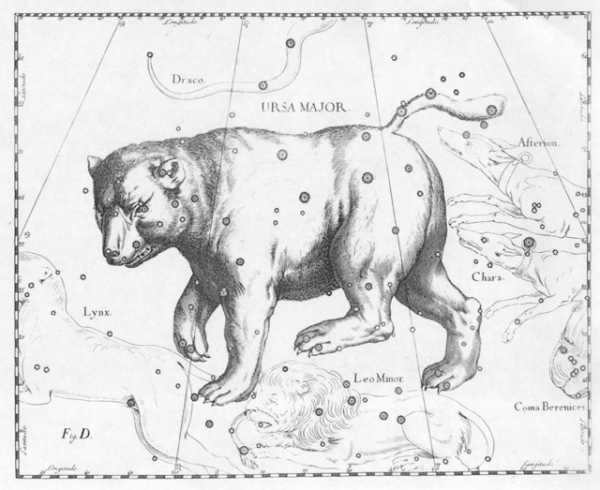

The constellation of Ursa Major can be observed in Jan Hevelius’ atlas.
To determine the number of stars present in Ursa Major, one can use a telescope for observation. Among these stars is Phecda, also known as gamma. Phecda belongs to the main sequence of stars and has been identified as part of the Moving Group. It possesses a distinct gaseous envelope with emission lines and is estimated to be approximately three hundred million years old. When observing the night sky, Phecda can be found in the lower left section of Ursa Major. Its name is derived from the Arabic term meaning “bear’s thigh”.
Megrez, another star, is massive but has the lowest brightness among the others. It has a mass that is two-thirds of the Sun’s mass and shines almost fifteen times brighter than our primary source of light. For a long time, scientists have observed an excessive amount of radiation coming from this star, which could suggest the presence of debris disks that have remained in orbit after a catastrophic event. The name of this star, “Megrez,” originates from Arabic and translates to “bear’s tail.”
Mizar is not only a celestial body but a binary star system. It is situated in the penultimate position. Interestingly, this is the initial double star in the exploration of the enigmatic sky that researchers were able to capture on film. This remarkable feat was accomplished by the renowned American photographer Whipple and scientist Bond, who utilized a telescope and a collodion plate to capture a historic photograph at their college observatory in the mid-1800s. The name Mizar can be translated as “belt” in literal terms.
Additionally, Alcor is included in the Big Dipper Constellation. It is considered a visual companion to Mizar. These stars have been affectionately nicknamed “the rider and the horse,” and at times, Mizar is referred to as “the forgotten one.” More recently, it was discovered to be a binary system. It is also part of a cluster of moving stars.
In the midst of the 18th century, Messier, while in pursuit of nebulae, stumbled upon a oscillating binary star and bestowed upon it his own name. It was also later discovered by Winnicke, a century later. Within the constellation, there exists another star of the main sequence, serving as a solar analog, yet surpassing the primary luminary in terms of thermal intensity.
In a phenomenon referred to by scientists as “the primary leap,” the Big Dipper constellation harbors Alula, a binary star that can be observed without the aid of a telescope. It is a colossal entity, surpassing the Sun’s radius by nearly sixty times, and its name, quite literally, means “northern leap”. Additionally, its companion, South, was unveiled by Herschel in the latter half of the 18th century.
The first pair, known as Nu and Xi, were given the nickname “the leaps of the gazelle” by the ancient Arabs. In addition to this, there is a second leap within the Medusa constellation, which includes Tainia. Researchers have also identified two other stars, Iota and Kappa, that make up part of this leap. Iota is represented by two double stars that are defined by their binary nature, while Kappa is represented by two unique dwarfs with different compositions.
One particularly fascinating star within the constellation is Groombridge, which was discovered and documented by the renowned British astronomer Groombridge in the early 1800s. At the time of its discovery, this star had the highest proper motion. However, it later dropped to third place when researchers found the Bernard and Keptain stars.
Surprisingly, this is a celestial body surrounded by a halo. Its motion goes against the rotation of the galaxy. Typically, these celestial bodies have low metal content and are approximately 10 billion years old. Scientists are still trying to comprehend the behavior and nature of this particular celestial body.
On the other hand, Laland, a red dwarf, presents another intriguing aspect. It is the fourth nearest star to our solar system. It is only preceded by Alpha Centauri, Bernard’s Star, and Wolf’s Star. In a mere twenty thousand years, it will approach the Sun at an extremely close distance. Furthermore, it emits X-rays.
How to locate the Big Dipper constellation
To locate the Big Dipper constellation, all you need to do is step out of your house in April around eleven o’clock in the evening if you are located at the latitude of Moscow. You will find the Big Dipper directly at the zenith. Once you have spotted it, you will remember it for the rest of your life. Many people often wonder which constellation separates the Big Dipper and the Little Bear, but in reality, there is no such star cluster. The Big Dipper and the Little Dipper are actually connected and it is quite easy to spot this connection in a dark sky.
To locate the Big Dipper constellation in the night sky, a closer observation is required. Upon closer observation, the Big Dipper becomes immediately visible, as it stands out as one of the most prominent constellations in the sky. Once located, one can mentally trace an imaginary line connecting the two outermost stars that form the handle, extending it to reach Polaris, the brightest star in the Little Dipper constellation’s sky. This connection between constellations symbolizes the relationship of a big bear leading its little bear cub.

In the sky’s northern hemisphere, situated above the highest point of our planet, lies the Big Dipper constellation, which conceals the enigma of the world’s genesis. Numerous myths and legends surround it. Yet, distinguishing fact from fiction is a challenging endeavor.
What were the various interpretations of this constellation among different cultures?
Throughout history, the seven prominent stars in the celestial expanse were perceived diversely by ancient civilizations, who attributed them to various shapes and figures.
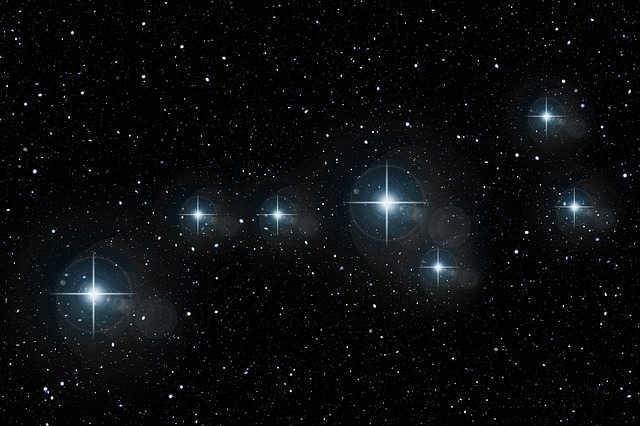
Let’s start by discussing the ancient Russian perception of the constellation. Our ancestors believed that the seven stars formed a cart, chariot, carriage, ladle, or pot. In Siberia, they were sometimes referred to as moose or horses.
In the Kazakh culture, the constellation was known as the “Seven Robbers,” while the Bashkirs called it the “Seven Girls.”
In America, the three stars forming the handle were seen as three hunters chasing a beast, while the remaining four stars represented the bear itself.
In Taoist belief, the dipper was seen as a majestic vehicle for the emperor, serving as a means to control the four cardinal directions and the five fundamental elements. It also held significance as the gateway to the Tao and the realm of life and death.
Ancient Greek mythology regarded the Big Dipper as a symbol of the great mother, who was believed to be the ultimate source of all life.
In Egyptian culture, the northern sky was considered the “womb of the world”. It was believed to be the birthplace of time and home to the goddess Nut, known as the “mighty mother of stars”. The constellation itself was referred to as Meskhet, or “the hip residing in the vast lake of the northern heavens”. Interestingly, this hip was often associated with a bull, as Nut was sometimes depicted as a cosmic cow who gave birth to the sun and all the gods.
The association between the Big Dipper, the ancient cow deity, and ancient symbols
Among many cultures, the constellation known as the Big Dipper is often linked to a bull, a primordial cow, or a deity with a bull’s head, similar to the Greek Minotaur.
The Minotaur was a creature that was half man and half bull. It was imprisoned in a labyrinth made up of seven concentric circles. According to myth, seven boys and seven girls were sacrificed to the Minotaur as a consequence of a lost war. The hero Theseus eventually defeats the Minotaur, finds his way out of the labyrinth, and escapes Crete with the help of Ariadne, daughter of King Minos.
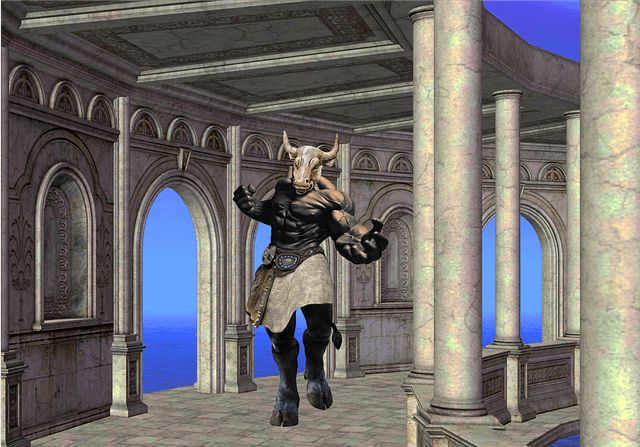
The legend of the Great Bear in the sky holds more than just a fantastical tale. The intricate maze composed of seven circles not only represents the celestial bodies of the planets, the fundamental principles of the universe, and the span of a week, but also serves as a metaphor for the intricate pathways of energy within the human body. Furthermore, it signifies the convolutions of the brain that align with our consciousness.
To successfully navigate through the labyrinth and return to its center is akin to embarking on a profound inner journey, one that enables us to gain a deep understanding of our true selves.
In the field of runology, the representation of the cow holds a significant position. It serves as both the beginning and the end of all things. The initial rune, UR, symbolizes the “primordial bull” or “cow”. In the context of Nordic tradition, it is referred to as Audumla. From Audumla’s udders, four rivers of milk flow – these rivers symbolize nourishing forces.
Milk, in addition to being a source of nourishment, encompasses a deeper meaning as a symbol of transformation and a pathway that stretches across the vast expanse of the starry sky – known as the Milky Way.
The wonders of transformation attributed to milk are depicted in the fairy tale of the Humpbacked Horse. Do you recall the three cauldrons into which Ivan the Fool immerses himself? The first contains cold water, the second contains boiled water, and the third contains boiled milk. As Ivan emerges from the third cauldron, he undergoes such a profound transformation that it is beyond the realm of fairy tales or even the capabilities of the written word.
The connection between milk, skate, and constellation is not accidental. In Russia, it was known as a humpbacked horse with a cart. Folk wisdom presented ancient knowledge in the form of a fairy tale.
Now let’s focus on the runes. The transformation begins with SD, representing wild unbridled force, and ends with FE, symbolizing the taming of this wild force. UR represents a wild cow, while FE represents domesticated cattle, which in ancient times represented wealth and successful business.
The runic series describes the entire process of creation and provides answers to sacred questions. It reveals the source of creation, the unfolding of the creation process, the force that controls the world, and the direction and purpose of our journey.
The Legend of the Seven Sages and the Origin of the Vedas
The renowned ancient Indian scripture Bhagavad Gita mentions seven illustrious sages who were born from the divine mind of Brahma, the Creator God. These sages dwelled in the constellation of the Big Dipper, which is believed to be the repository of profound knowledge. They transmitted this knowledge to humanity through the Vedas (derived from the Sanskrit word “vedat”, meaning “to know”) – the oldest scriptures known to mankind.
In the Russian language, the term “Rishi” is often replaced with the word “shaman”, which signifies a “wise person” or “one who possesses knowledge”, and in a more precise translation: “one who has attained spiritual bliss”. Shamans are individuals who have transcended the limitations of the physical body, expanded the horizons of the mind, and undergone spiritual revelations.

However, what constitutes the most genuine knowledge? Is it the knowledge obtained by Indian sages or by our shamans?
If we closely examine the ancient texts, it becomes evident that the Indian Vedas are merely a fraction of the Slavic-Aryan Vedas or the works of the Aryan race. These texts were passed down to India by the Aryans, whose homeland resided near the North Pole, where “the sky is upheld by a pole and spins like a wheel”.
The Vedas are timeless divine scriptures that were audibly perceived by wise individuals and bestowed upon humanity for personal growth, self-awareness, and the revelation of inner capabilities.
These texts were recorded using ancient H’Aryan runes or runic scripts, which served as the foundation for the development of ancient Sanskrit, Rez, Germanic-Scandinavian writing systems, and various other alphabets, including ancient Slavic, Cyrillic, and Latin.
The Indian and Slavic Vedas share a common origin that traces back to the Arctic or Hyperborea, a region situated beyond the Arctic Circle. It is in this place that the seven sages constellation is directly above, and it is from here that the original enigma began to spread across the globe.
Regardless of the names and associations given to the 7 great stars, it is evident that they hold the primary knowledge within the vast sky. This knowledge was not only possessed by the wise sages and the first people who inhabited the northern regions, but also by anyone who attained a high level of consciousness and purity of perception.
How can one access this knowledge? Through a direct connection to the universal mind and through spiritual listening.
Did you know that the Vedas are also known as “shruti”? This term refers to knowledge acquired through listening.
So, what power communicates with us and conveys information about the mysteries of the universe and the structure of humanity? Undoubtedly, it is the runic power. The word “rune” signifies “mystery” and “soft whisper”.
Runes are not simply letters, but rather secret symbols containing a wealth of knowledge that has existed since the beginning of the world’s creation. Over time, these symbols have taken on a more conventional form.
Although runes were not originally intended for religious purposes, they were bestowed upon humanity as a gift. Through their study, we are able to unlock the mysteries of the universe and gain a deeper appreciation for all that exists on our planet. These runic symbols allow each of us to gain self-understanding and discover the higher purpose of our lives.
Attaining a mystical experience does not require a journey to the North Pole or lengthy meditation under the seven great stars. Instead, it is possible to awaken our shamanic consciousness and connect with other realms of existence. This is the true essence of shamanism.
Discover the various techniques of self-discovery by utilizing the ancient wisdom of runes.
Tap into the cosmic reservoir of knowledge, observe the celestial bodies from different perspectives, gaze upon the constellation of Ursa Major from the vast expanse of the universe, and you may stumble upon a newfound revelation.
The depths of the cosmos hold countless enigmas yet to be unveiled, and uncharted territories await our exploration. The stars conceal unexpected wonders and delight in stimulating our creativity, unveiling an irrefutable reality: the world is shaped by our perception.
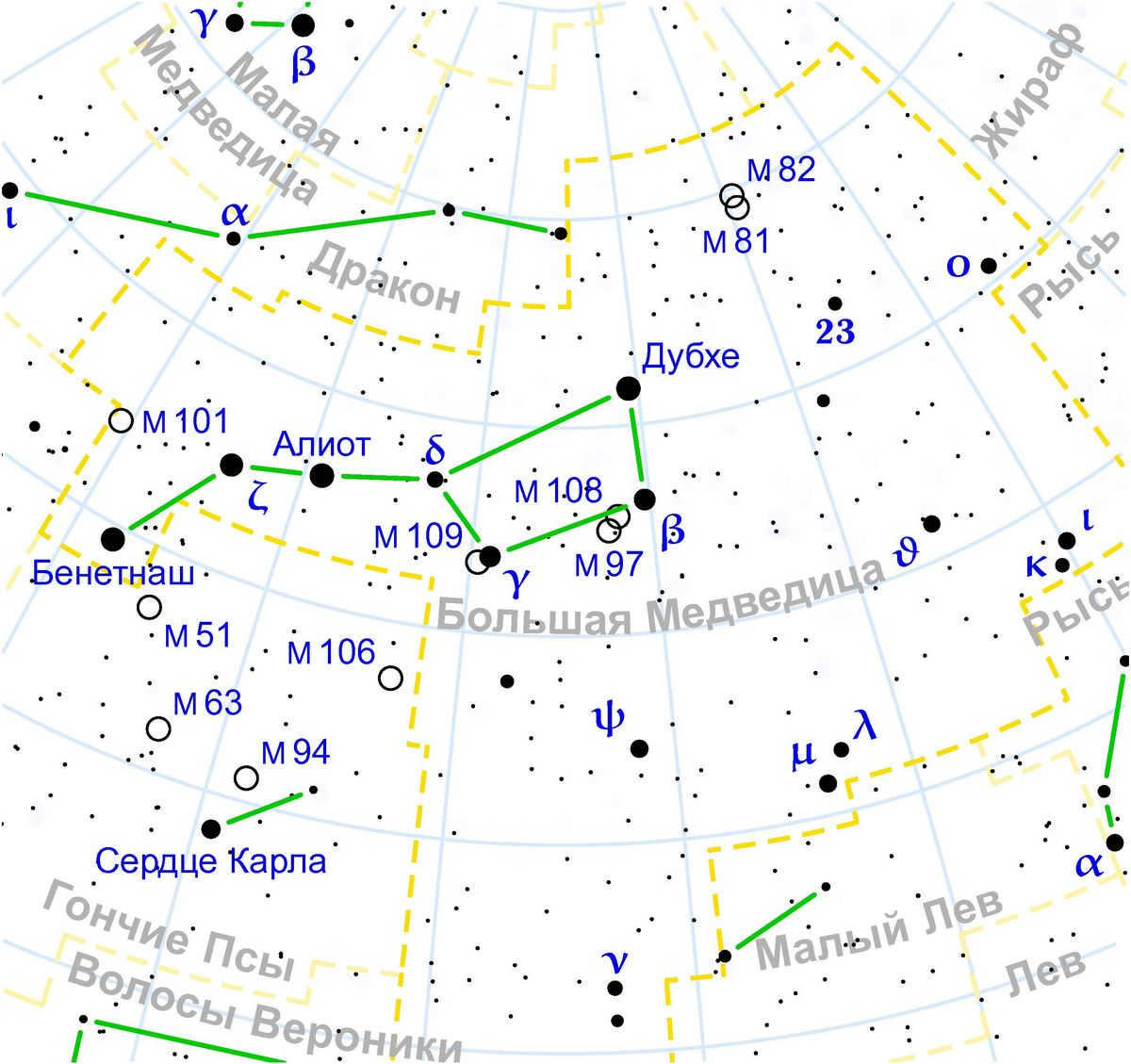
The 1782 Atlas created by Johann Bode.
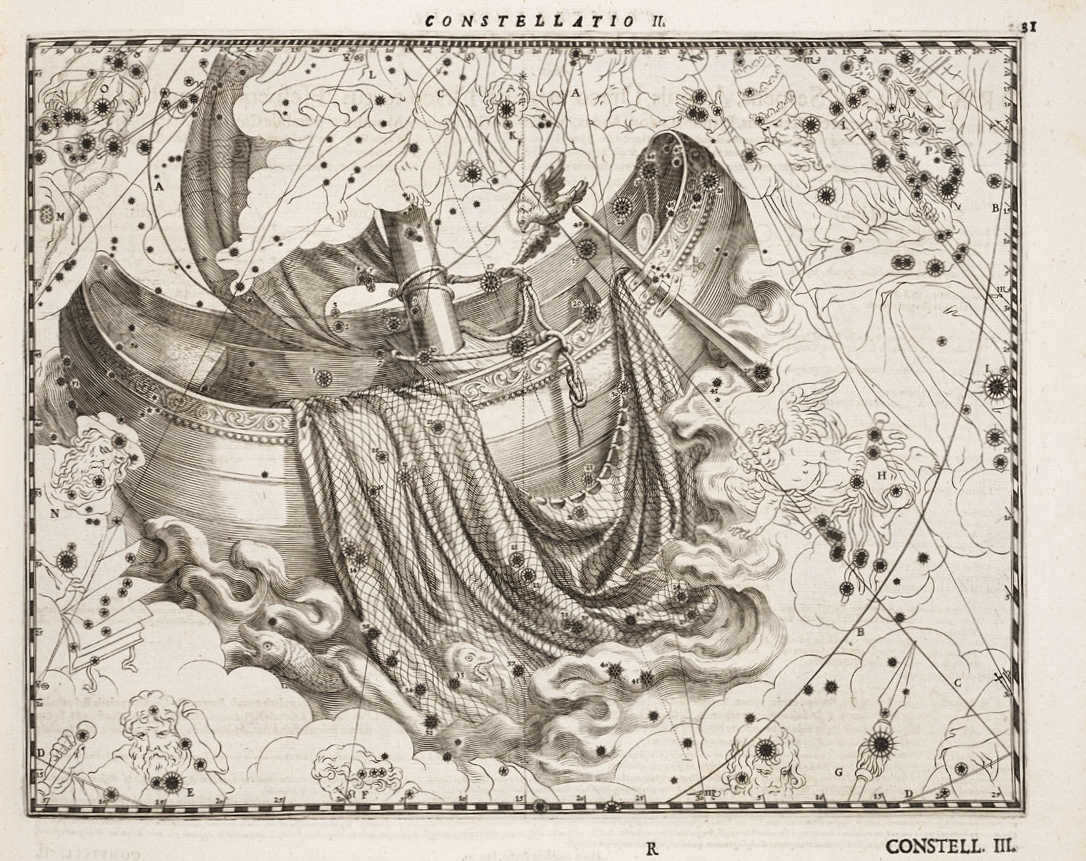
Atlas by Julius Schiller, published in 1627.
The Great Bear is the most well-known constellation in the sky of the Northern Hemisphere that does not set.
Description and Research [edit]
The constellation’s seven bright stars create a famous shape known as the Big Dipper.
The stars Merak and Dubhe (the “front wall” of the Dipper) are referred to as the Pointers because a straight line drawn through them points directly to the North Star. Additionally, their position in the sky allows them to act as a clock and determine the local time.
Adjacent to Mitsar (the second star from the end of the "handle" of the Bucket), a star of magnitude 4 called Alcor (80 Uma) can be discerned by those with keen eyes. This pair has earned the nickname The horse and rider. According to Arab beliefs, the ability to identify Alcor signifies excellent eyesight and potential as a skilled archer.
Another asterism of Arabic origin, known as The three jumps of the gazelle, consists of three sets of stars positioned in a straight line at equal intervals. The first set, known as the "first leap," includes the stars Alula North and South (ν UMa, ξ UMa). The second set, referred to as the "second leap," consists of Taniyah North and South (λ UMa, μ UMa). Finally, the third set, known as the "third leap," includes Talitha North and South (ι UMa, κ UMa).
Included in Claudius Ptolemy’s Almagest catalog of the starry sky.
In 1603, Johann Bayer (1572-1626), a German astronomer, published his renowned atlas “Uranometria” based on the observations made by Tycho Brahe. This atlas greatly improved the accuracy of star positions in the sky. For the first time, Bayer assigned Greek alphabet letters to the stars according to their decreasing brightness. However, he deviated from this pattern when labeling the seven stars of the Big Dipper, opting to arrange them based on their spatial location.
Julius Schiller, in his atlas “Christian starry sky” (1627), referred to the constellation as “Peter’s Boat.”
The constellation of the Big Dipper is featured on the flag of Alaska, the northernmost state in the United States.
Bright stars [ edit ]
Historical name Scientificdesignation Stellar
magnitude Distance
(light years) Physical characteristics
| Dubhe | α UMa | 1.81 | 124 |
| Merak | β UMa | 2.34 | 79 |
| Fekda | γ UMa | 2.41 | 84 |
| Megretz | δ UMa | 3.32 | 81 |
| Aliot | ε UMa | 1.76 | 81 |
| Mitsar | ζ UMa | 2.23 | 78 |
| Benetnash | η UMa | 1.86 | 101 |
Noteworthy Locations [ edit ]
The Big Dipper region is home to numerous galaxies and galaxy clusters. The flat-on view of the spiral galaxy M101, along with the stunning spiral galaxy M81 and the slender spiral galaxy M82 that shows evidence of a massive explosion, comprise the core of what could possibly be the nearest group of galaxies to us, located approximately 7 million light-years away. However, the almost featureless Owl (M97), which is one of the largest planetary nebulae, is situated within our own Galaxy.
Miscellaneous [ edit ]
- The five stars in the center of the Bucket create a cohesive group both visually and spatially, symbolizing the swift-moving cluster of the Big Dipper; with the exception of Dubhe and Benetnash, the outermost stars that move in the opposite direction.
- In 2002, scientists at the University of Texas at Arlington made a groundbreaking discovery of two exoplanets circling the star known as 47 of the Big Dipper.
Literature [ edit ]
- A. M. Romanov “Astronomy and Beyond: A Collection of Intriguing Questions”. – Moscow: MCNMO, 2005. Pages 97-99. ISBN 5-94057-177-8.
- “Discovering the Wonders of the Universe: A Guide to Planets and Constellations”. Atlas-guidebook. – Moscow, “Onyx”, 2007. Pp.34-35. ISBN 978-5-9603-0071-1.
- “Cosmos. A Concise Encyclopedia”. – Moscow, “Astrel”, 2004. Pp.238-240. ISBN 5-271-01916-0
References [ edit ]
Resources [ edit ]
Works cited [ edit ]
Further reading [ edit ]
Bibliography [ edit ]
Sources [ edit ]
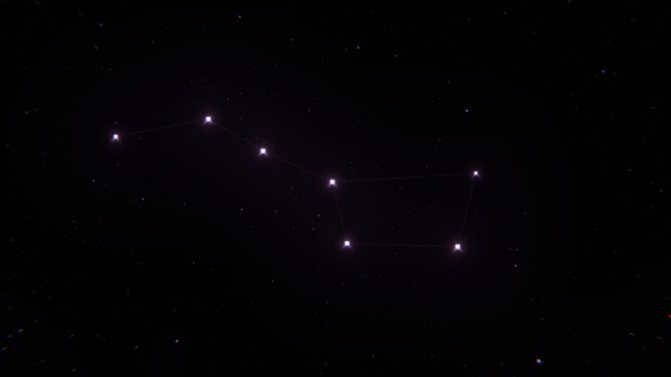

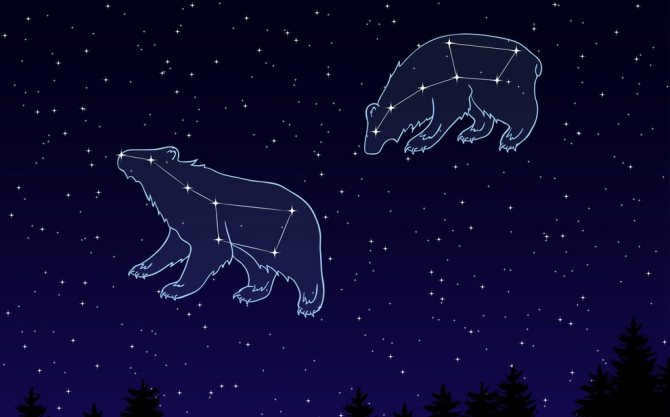
Truly, the celestial canopy presents a rather disordered image. It takes a highly developed imagination to perceive, like the ancients, in the randomly scattered stars the shapes of people, animals, and various objects. However, there are some truly breathtaking star formations that are captivating in their own right! One of these is the renowned Big Dipper, which serves as a prominent landmark in our celestial sphere. It is worth noting that the Big Dipper is not a constellation on its own, but rather a part of the larger constellation known as the Big Dipper. So, how can one locate the entire Big Dipper in the sky?
The solution is simple: by moving away from the ladle!
However, first you must locate the ladle itself.
The appearance, description, and characteristics of the Big Dipper
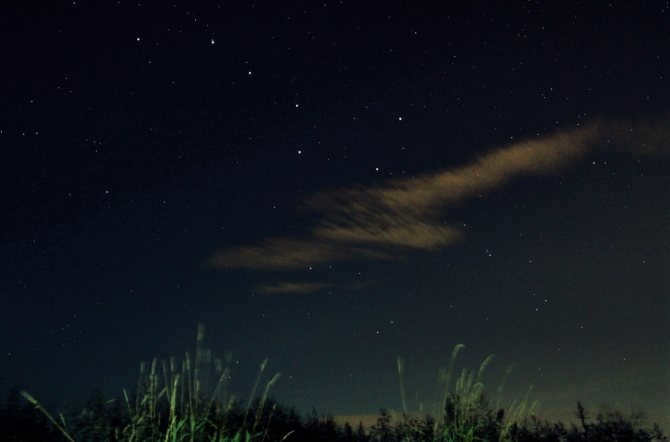
Image of the prominent group of stars known as the Big Dipper in the nighttime celestial dome
The Big Dipper is ranked as the third largest constellation, encompassing over 3% of the entire celestial sphere and spanning an area of 1279.66 square degrees. It revolves around Polaris, ensuring its perpetual presence above the horizon throughout the year, and making it easily observable in the sky.
The Big Dipper is composed of seven luminous stars, collectively resembling the shape of a dipper or ladle. In Latin, this constellation is referred to as Ursa Major and is abbreviated as UMa.
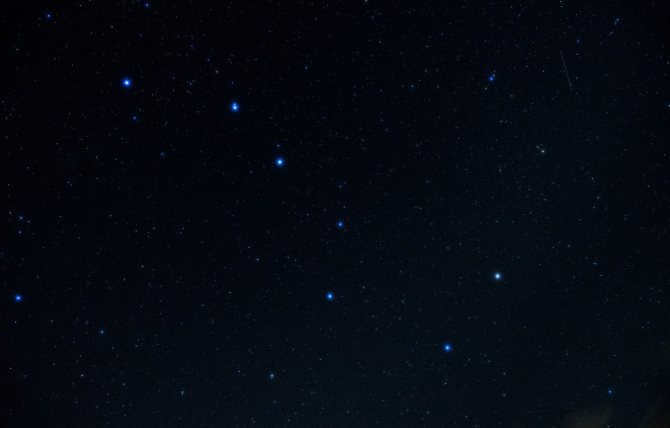
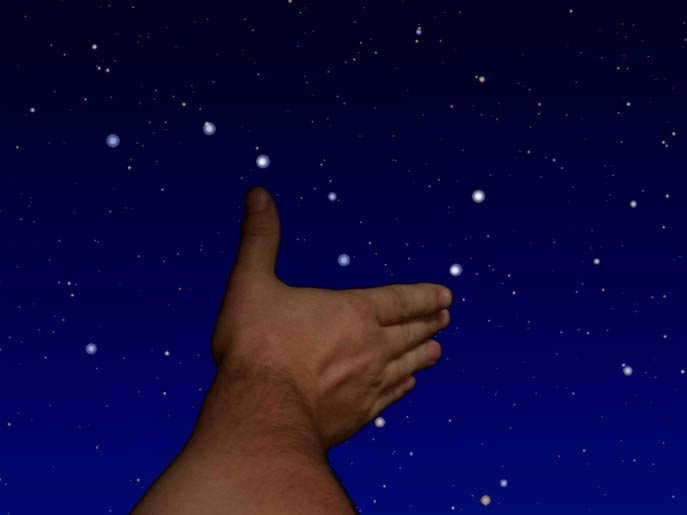
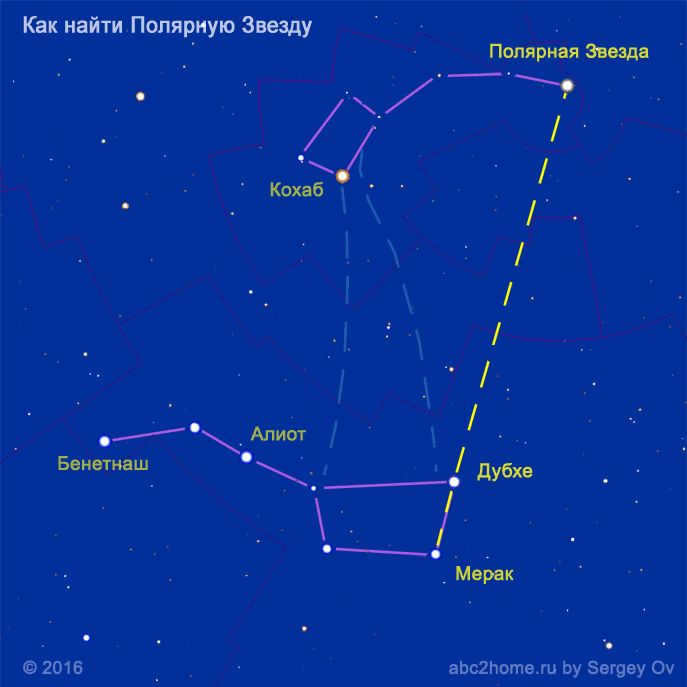
There was a lack of consensus on a name for a significant period of time
The configuration of stars known as the Little Bear resembles a ladle, similar to the Big Dipper. The Phoenicians, renowned navigators of ancient times, utilized this group of bright stars for navigation. However, Greek sailors relied more on the Big Dipper for orientation. The Arabs perceived the Little Dipper as a rider, while the Indians envisioned it as a monkey that clings to the center of the world with its tail and orbits around it. As evident, there was no universally agreed upon interpretation or name for quite some time, with each civilization attributing their own unique and easily understandable meaning to the celestial sky. What additional insights can the Big Dipper constellation provide?
What is the method to locate the Big Dipper constellation in the night sky?
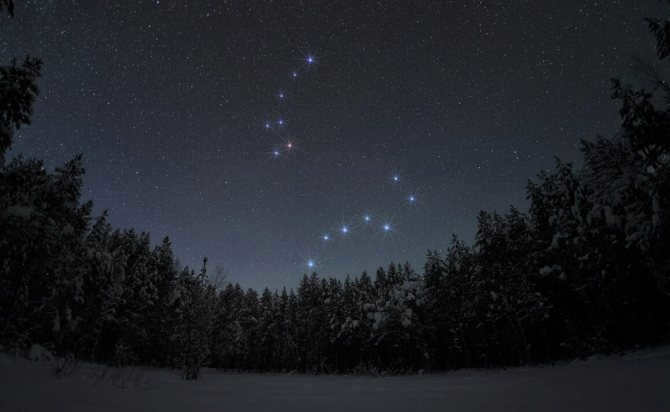
Image of the Ursa Major and Ursa Minor Constellations
Locating constellations in the night sky can be a challenging task without specialized equipment. However, finding the Big Dipper can be relatively easy due to its distinct shape. Once a person locates this asterism, they can easily navigate the sky.
During late summer and early fall, the Big Dipper can be found in the northern part of the starry sky. For optimal viewing conditions, it is recommended to wait until nighttime and venture outside of the city to avoid interference from house lights and street lamps.
Fascinating fact: Determining the north direction can be as simple as observing the Sun’s position at noon. The star will be located on the opposite side, in the south.
During the autumn season, the asterism can be observed high in the sky with a horizontal orientation. The stars comprising the asterism are sufficiently bright for the naked eye to perceive them, and our brain connects them in a straight line, forming the desired object.
Due to the Earth’s rotation around the Sun and its axis, the arrangement of constellations in the night sky gradually changes when viewed from a fixed point. As a result, between January and February, the Big Dipper undergoes a circular rotation: the bucket part tilts downward from its horizontal position, while the handle remains fixed. Additionally, the overall position of the cluster gradually shifts towards the northeast.
During the spring season, locating the Big Dipper in the night sky becomes more challenging. At this time, the asterism is positioned with its “lid up,” which may cause an uninformed individual to overlook it.
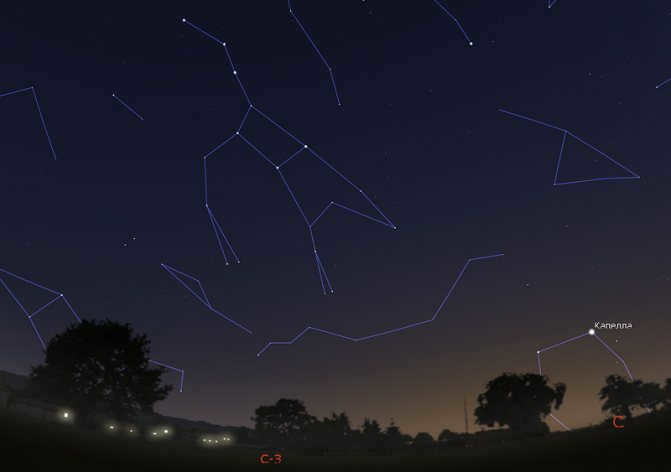
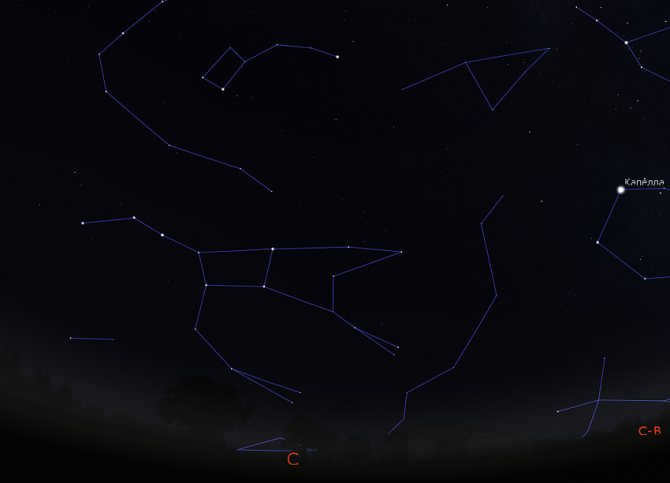
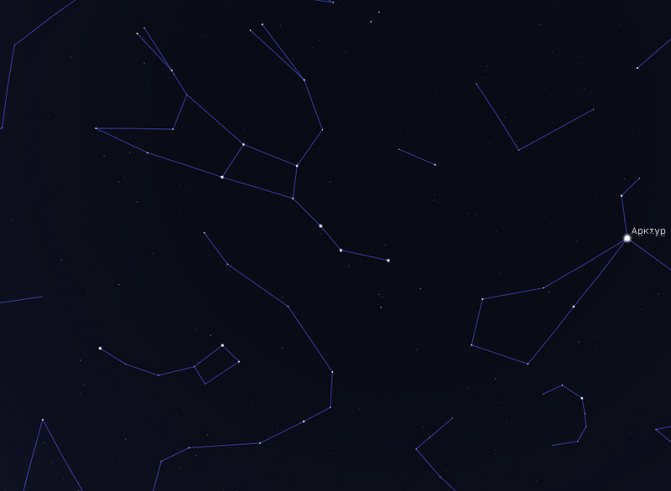
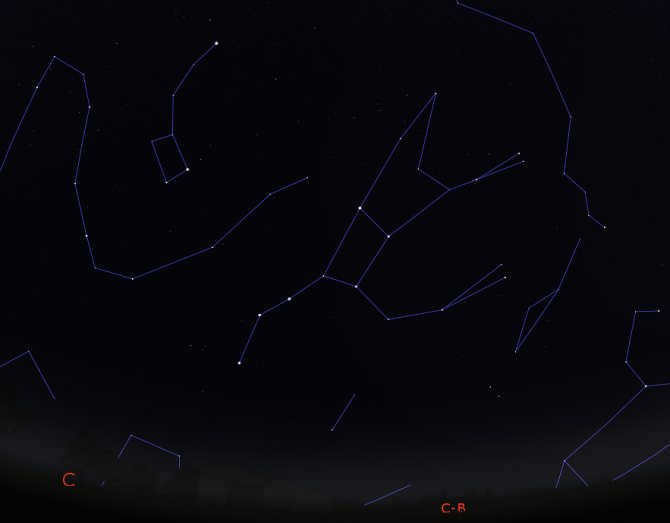
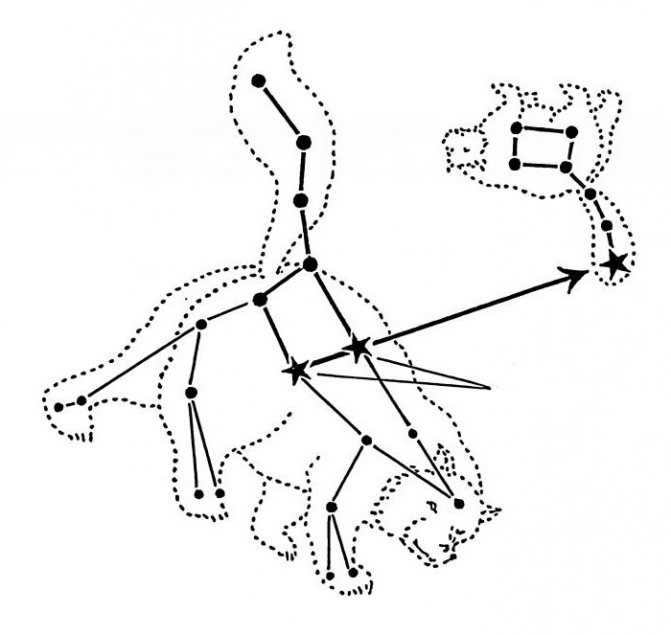
A heartwarming tale of righteousness and malevolence
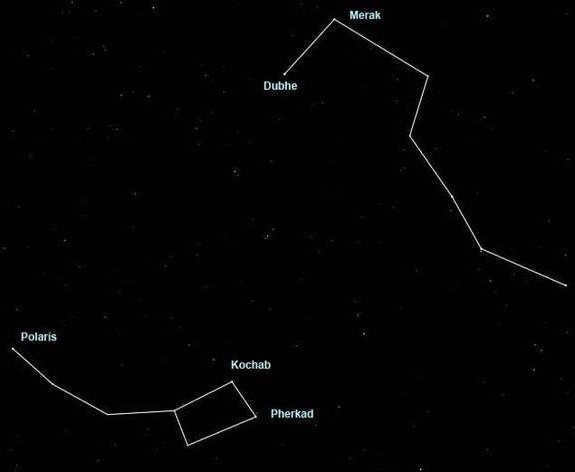
Ancient Depictions of the Big Dipper
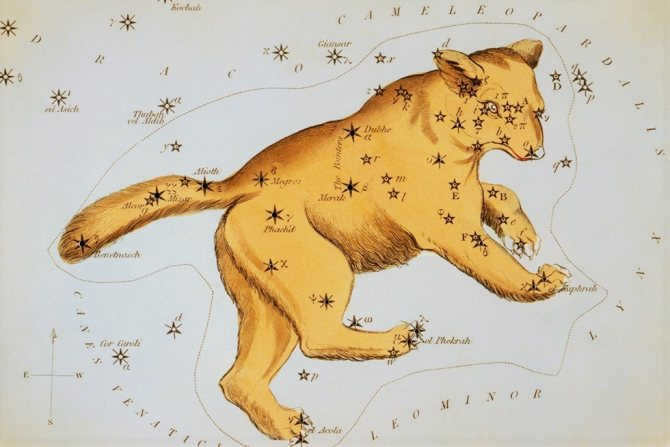
There is a version of the depiction of the Great Bear on a celestial chart
The Great Bear is regarded as one of the most ancient constellations, as almost every civilization that has inhabited the Earth has made reference to it. The earliest records of this star grouping can be traced back to India, where it was known as “Sapta Rishi” (seven sages). This name originated from the presence of seven main stars that form the Dipper. The Chinese also took notice of this celestial formation and used its position in the sky to determine time.
The Indians also identified this constellation as a bear, although they believed that it was made up of four stars arranged in a trapezoid shape. They also saw three hunters chasing the bear, with Aliot leading the way and carrying a bow, Mitzar carrying a cauldron, and Benetnash bringing a pile of brushwood to start a fire.
According to storytellers from Greenland, the appearance of the constellation has a legendary tale
In the remote land of Greenland, there exists a captivating tale surrounding the constellation known as the Big Dipper. This cluster holds great significance in both mythology and history, captivating the imaginations of many. However, it is the legend of the great hunter Eriulok that has garnered the most attention among the Eskimos. This story is so widely shared that some even believe it to be more than just fiction, but rather a depiction of pure truth.
Living in a snow house on the fringes of Greenland, Eriulok was a renowned hunter who prided himself on his skills. His arrogance led him to isolate himself from his fellow tribesmen, as he considered himself superior to them in every way. Despite his solo lifestyle, Eriulok consistently returned from his sea expeditions with bountiful spoils. His dwelling boasted an abundance of food, including seal fat, and its walls were adorned with the finest skins of walruses, seals, and sea lions. Eriulok was wealthy and well-fed, yet he still felt the weight of loneliness.
Desperate for companionship, Eriulok attempted to forge friendships with his Eskimo brethren, but his prior arrogance had left them unwilling to engage with him. It seemed that he had wronged them deeply in the past, causing them to shun his attempts at reconciliation.
Stars in the constellation Ursa Major
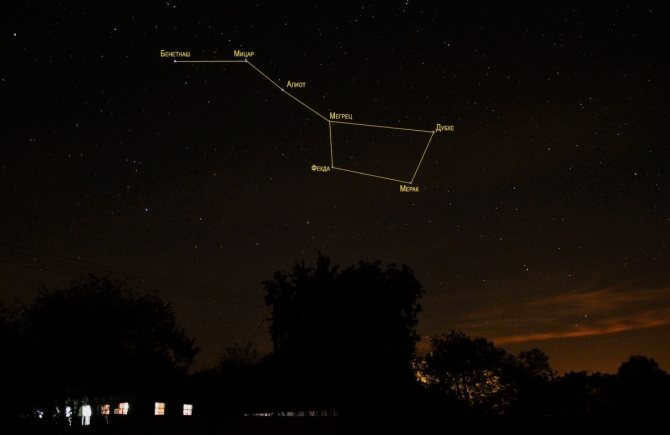
The primary stars of the Great Bear
The Great Bear is composed of a remarkable number of stars. However, in its constellation, the Plough, there are only seven luminaries that form a distinctive shape. Modern technology enables astronomers to continuously observe them and obtain the necessary information. The Plough constellation consists of:
- Dubhe – serves as the alpha and is considered to be the second brightest star in the constellation. Thorough studies have revealed that Dubhe is composed of two luminaries: the main sequence and the orange giant.
- Merak is the beta of the cluster. Although not regarded as the most prominent in the night sky, it shines 69 times brighter than the Sun.
- Phecda is a luminary situated at the bottom of the Plough, below the handle.
- Megretz is the least bright star in the Big Dipper.
- Aliot is the most luminous star in the cluster, easily visible in the night sky.
- Mizar is not very visible, unlike the nearby star Alcor, which is nearly twice as bright.
- Alkaid is the farthest star from the rest of the group, located at the end of the handle of the Big Dipper.
In addition to the seven stars in the constellation, there are approximately 125 more stars. Only a few dozen of them can be seen with the naked eye. The most prominent ones are the three stars to the right of the Dubhe-Merak pair, which form a triangle. In the lower right corner of the Big Dipper, there is another triangle formed by the stars lambda, mu, and psi.
Fun fact: In some cultures, these two triangles represent the back and front paws of a bear.
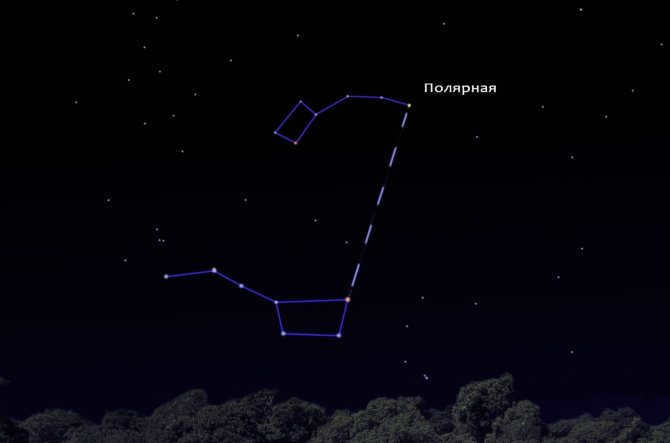
Image depicting the position of Polaris in relation to the Big Dipper
There are also a few notable stars to the right of the Big Dipper, with only two stars hidden behind the horizon in Russia. Since the constellation is always visible in Russia, local astronomers and stargazers can easily locate the following celestial objects:
- Polaris
- Cassiopeia
- The nearby constellation of Leo
- The stars Capella and Arcturus
- The constellation Gemini
- The constellation Virgo
Interesting fact: Venus – description, structure, characteristics of the planet, interesting facts, photos, and videos
If you know the side relative to the Big Dipper where these objects are located, they can be easily found.
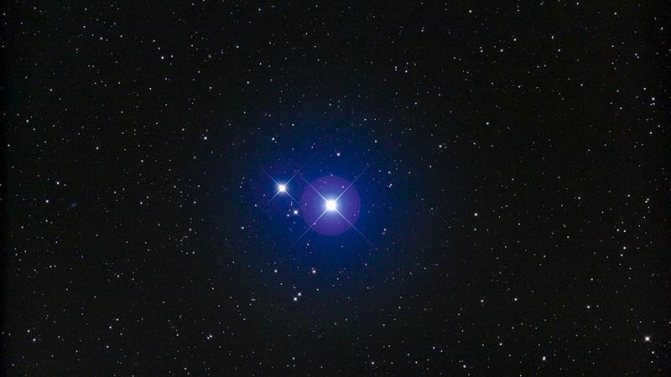
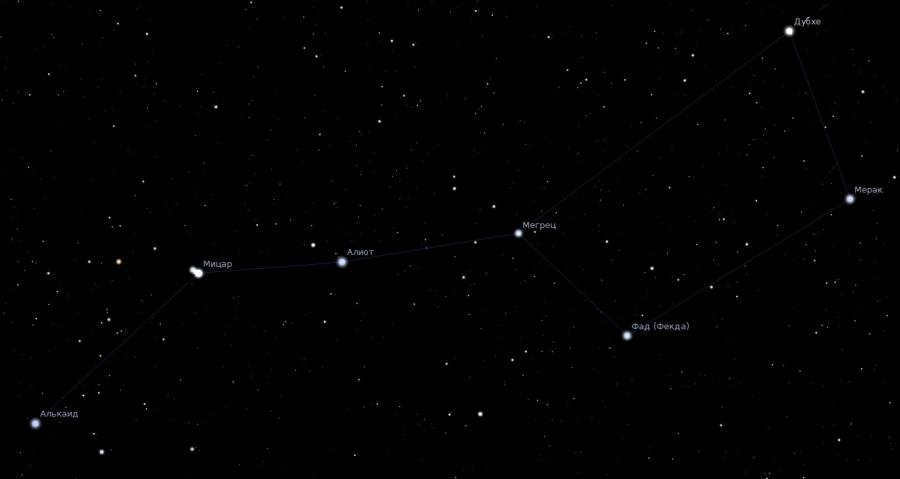
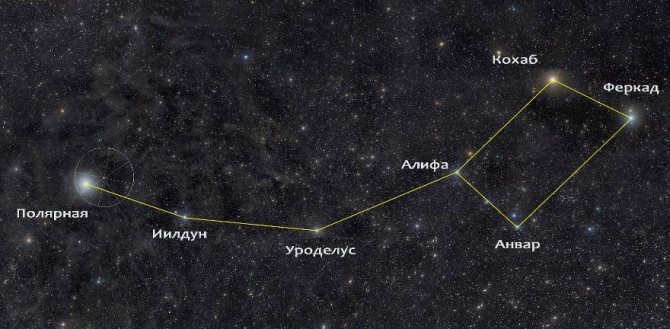
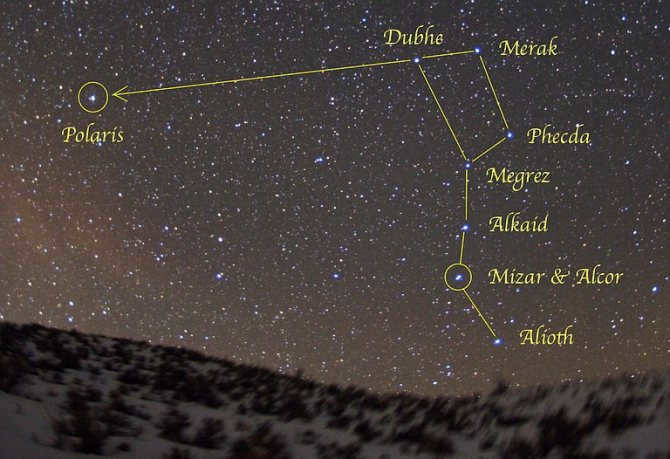
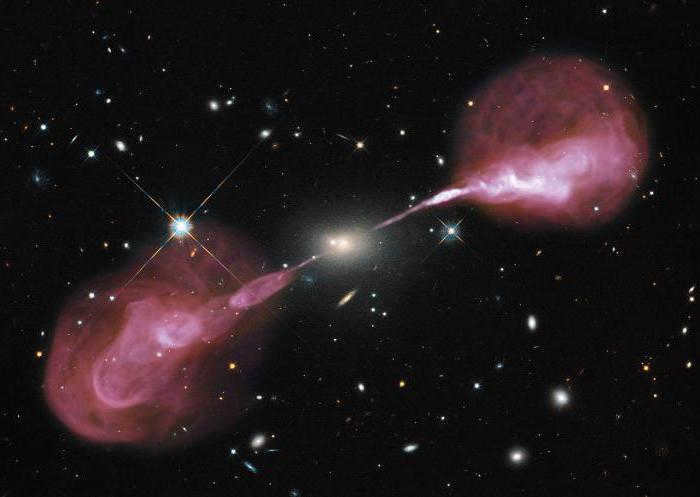
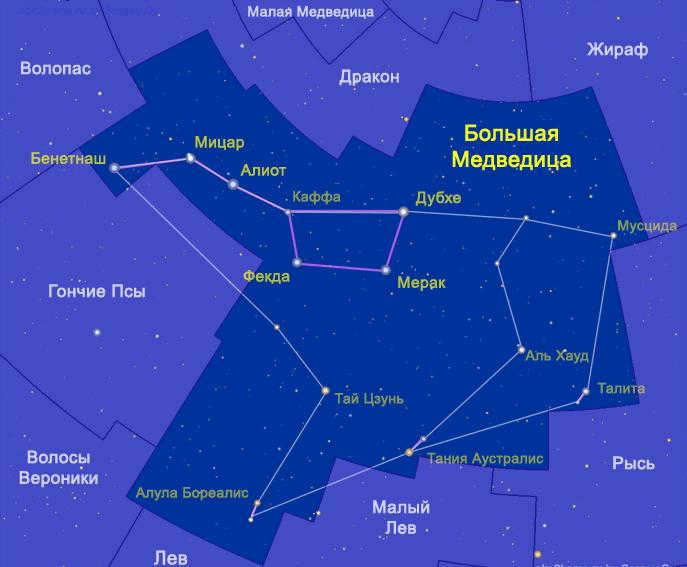
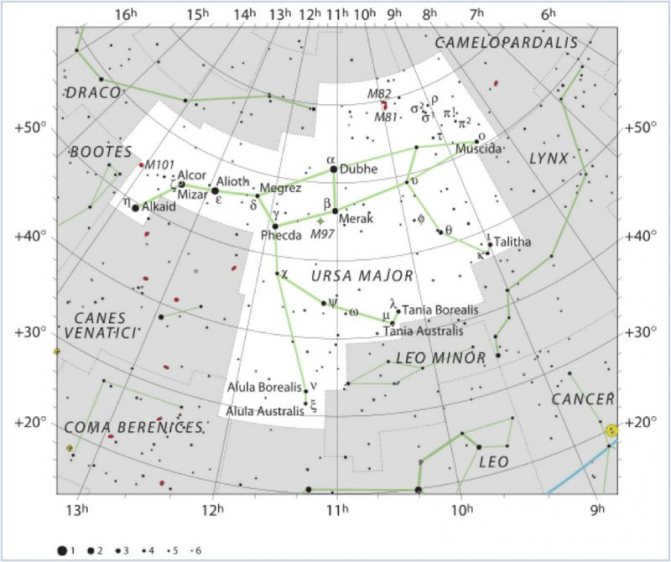
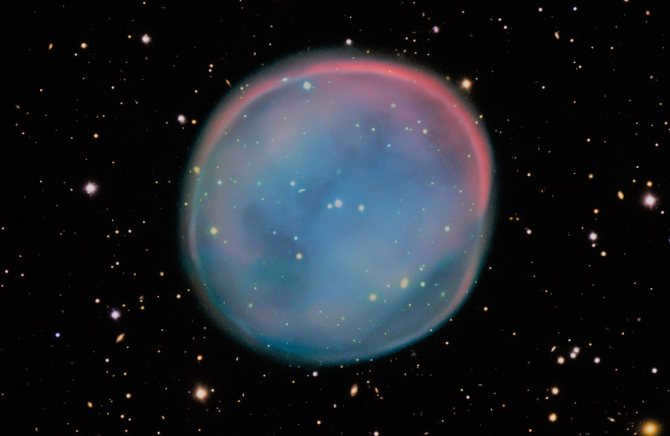
Owl Nebula
Most of the objects of the Big Dipper can only be observed with professional equipment. In an amateur telescope, you can only see the Owl Nebula, also known as M97. It is located next to the star Merak.
Galaxies
The area of the night sky where the Big Dipper is situated is home to around 1,500 galaxies that are of interest to astronomers. Since this cluster is located in the Milky Way region, most of these galaxies can be seen with a professional telescope.
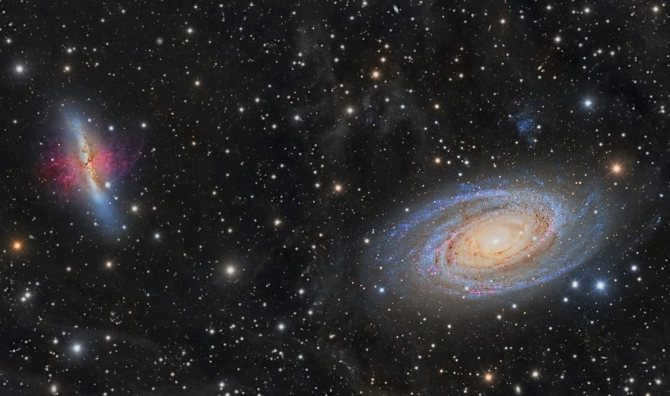
Two galaxies, M81 and M82
Located at a distance of 12 million light years from our planet, the galaxies known as Cigar, Bode, and Vertushka are designated as M82, M81, and M101, respectively. Of these, the first one is renowned for its stunning beauty in the vast expanse of space. Its arms emit a mesmerizing violet-blue glow, while the radiant center appears as a distinct blue sphere.
The spiral-shaped galaxy, Vertushka, is characterized by its long, curved tails adorned with numerous luminous objects. Astronomers often liken these objects to fireworks, as they bear a striking resemblance to exploding bursts of colorful lights.
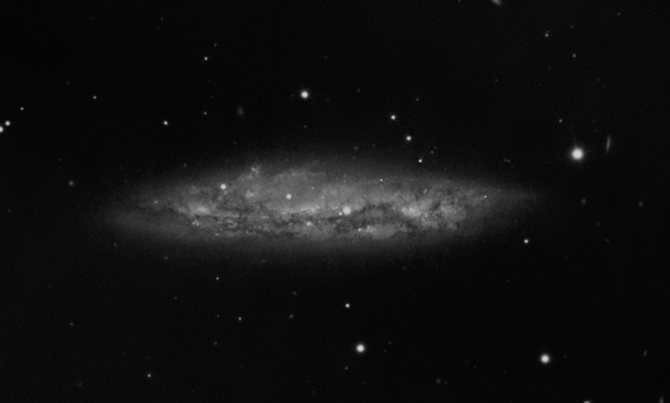
The galaxy M108 can be found near the star Merak. Due to dust clouds, its center is not visible to observers and its brightness, when observed from Earth, is about 12m.
Not far from the Fekda luminosity, you can spot the Vacuum Cleaner galaxy, known as M109. It is considered one of the most challenging objects to observe because its glow is often overlapped by stars.
Astronomers regularly discover new galaxies with unique features while observing the sector where the White Bear is located. Its favorable position in the sky allows for the observation of even the most distant objects.
The Big Dipper: the dipper during autumn
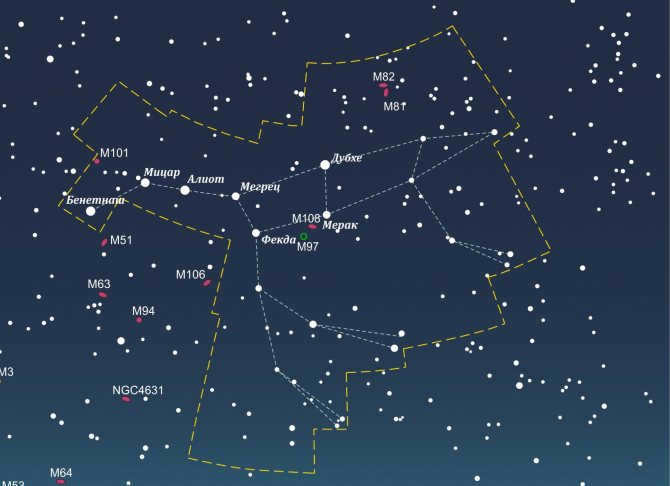
A detailed depiction of the constellation Ursa Major
Since all celestial objects are constantly moving, the Big Dipper can be found in different parts of the night sky at different times of the year. During the autumn months, many stars become obscured from view. However, the Big Dipper’s distinctive pattern of seven main stars is an exception. Although they may not appear as bright between September and November, they can still be observed with the naked eye.
In the autumn, Ursa Major can be seen in the northern part of the sky, below Polaris. The “bucket” of the Big Dipper is oriented with its handle pointing towards the west. Towards the east, the constellation Pleiades is visible, with the bright star Aldebaran shining nearby. To the northeast, the prominent stars that form the constellation Gemini can be observed.
However, not all constellations are visible in autumn. Virgo and Leo, which are located in Russia, extend beyond the horizon, and the Eagle constellation is barely visible from the western region, behind the Big Dipper.
During the autumn season, the following constellations are considered to be the brightest:
These constellations can be observed at night without the need for specialized equipment. To observe other celestial objects, astronomers rely on professional telescopes, which have enough power to bring the desired stars and galaxies closer. For instance, the Hubble telescope is capable of observing over a thousand galaxies within the stellar region of the Big Dipper. Thanks to this advanced technology, scientists can continue their work without any seasonal interruptions or breaks.
In both ancient and modern eras, constellations have served as a guide for navigation in space. Explorers and seafarers have relied on the brightness and position of constellations to determine the time and find their way. However, our current lifestyle has diminished our connection to the enigmatic night sky, as we now rarely gather around the fire or gaze up at the starry heavens. The legends and stories surrounding constellations like the Big and Little Dippers, Cassiopeia, and Hound Dogs have faded away. Only a few individuals are capable of pointing out the Big and Little Dipper in the sky. Through astronomy lessons, we have learned that stars are distant entities, with many being similar to our own Sun.
The advancement of optical telescopes has led to numerous discoveries that were previously unknown to our ancestors. It goes without saying that humans have even been able to venture to the Moon, collect samples of lunar soil, and successfully return home. Science has unveiled the mysteries and obscurities that shrouded the celestial bodies for centuries. Yet, we still gaze up at the sky, searching for familiar constellations such as the Big Dipper, the mighty Lion, or the elusive Cancer. Many people find solace in observing the night sky, free from clouds, where they can marvel at the diverse array of celestial bodies, their interactions, and clusters.
False beliefs surrounding the birth of the Big Dipper
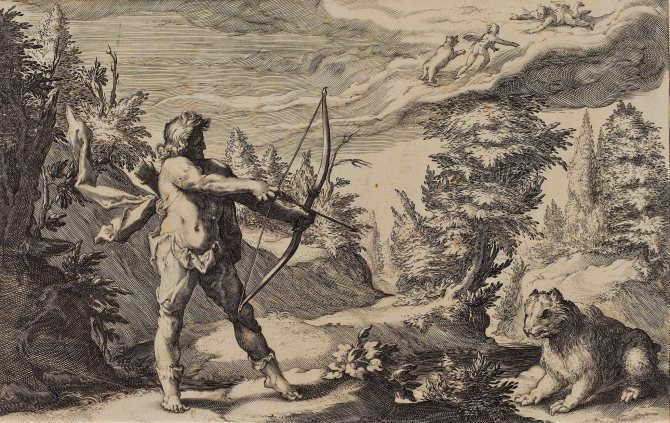
Arcade and Callisto
There are multiple legends surrounding the creation of the constellation. One of the most fascinating and well-known is the Greek myth. As previously mentioned, it involves the girl Callisto, who was the daughter of the king of Arcadia and caught the attention of Zeus.
However, there is an alternative version of the myth. In her youth, Artemis frequently went hunting in the forest, seeking various game. She would bring along young girls of exceptional beauty to assist her. Callisto was the most radiant among them.
Zeus was captivated by her beauty. In order to win Callisto’s affection, the god disguised himself as Artemis. After some time, Callisto gave birth to a son named Arcas. Zeus’s wife, Hera, discovered her husband’s actions and angrily transformed Callisto into a bear with an unappealing appearance.
Ever since that time, the two constellations have been constantly seen together in the magnificent night sky, and due to the unique positioning, it gives the impression that both clusters are watching out for each other. Moreover, if an individual has managed to locate one constellation in the vast expanse of the sky, they will effortlessly be able to spot the second one as well.
Fascinating fact: As an intriguing detail, the stars Benetnash and Duhbe exhibit a distinct behavior compared to other stars, as they move in the opposite direction. This movement causes the shape of the Bucket to gradually transform over the course of a year.
What is the optimal moment to view the Big Dipper?
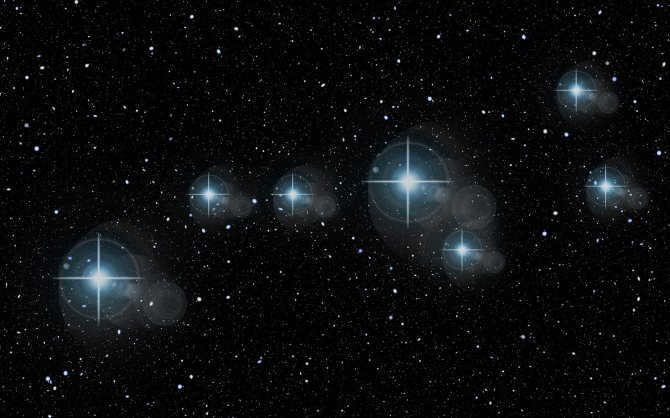
Artificial illumination of the stars of the Ursa Major constellation
To observe the Ursa Major constellation in the Russian Federation, it is necessary to venture outside the city, away from the light pollution that obscures celestial objects. The best time to view the constellation is from March to April.
Fascinating fact: In the first few weeks of April, residents of Moscow can witness the Ursa Major constellation directly above them.
During these months, the Ursa Major constellation rises to its highest point in the sky, and around 11:00 PM each day, the stars reach their peak brightness. By looking up, one can easily locate the Big Dipper. And with even a basic pair of binoculars, one can observe not only the seven main stars but also nearby objects.
Autumn is not the ideal season for observing the Big Dipper. During this time, the brightness of the asterism diminishes, and it becomes necessary to use a telescope in order to identify the neighboring stars associated with the constellation.
Guidance using the Big Dipper
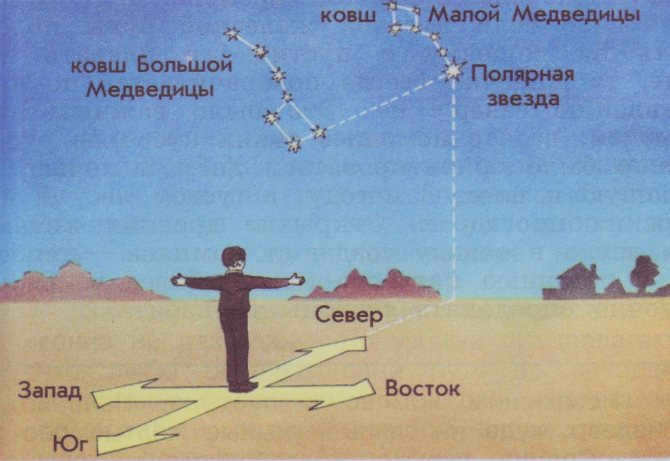
Navigation using the Ursa Major and Polaris
Due to its brightness, the Ursa Major has served as a reliable point of reference for humans since ancient times. Depending on the season, experienced navigators were able to determine the cardinal directions by observing the Big Dipper and find their way in the correct direction.
Most importantly, the Big Dipper helps in locating Polaris in the sky. By mentally drawing a straight line from the celestial body to the Earth, one can accurately determine the north by this perpendicular line.
Fascinating fact: In ancient Russia, the constellation was referred to as the Horse because of its distinctive shape. The polar star was believed to be a peg to which the animal was tied.
One benefit of using the Big Dipper as a point of reference is its expansive coverage in the celestial sphere. Even when the weather is cloudy, there is a high likelihood that a portion of the constellation will still be visible. This limited visibility can still serve as a reliable indicator of the northern direction.
The nighttime sky is always a sight that catches the eye

The celestial expanse, the prominent constellation Ursa Major, the lesser constellation Ursa Minor, the celestial beauty of Andromeda, and the iconic Southern Cross… What can be more awe-inspiring and grandiose? Countless stars twinkle and shimmer, captivating curious minds. Throughout history, humanity has yearned to find its place in the vast cosmos, pondering the inner workings of the world, its position within it, and the origins of its existence. Sitting under the night sky, gazing into the distant abyss, individuals have come to realize a simple truth – the stars are not haphazardly scattered across the heavens but possess their rightful place.





